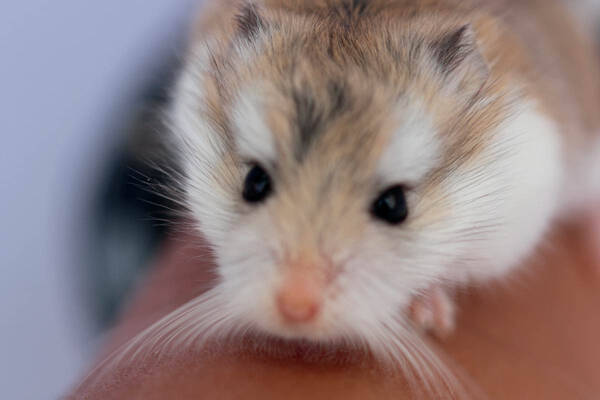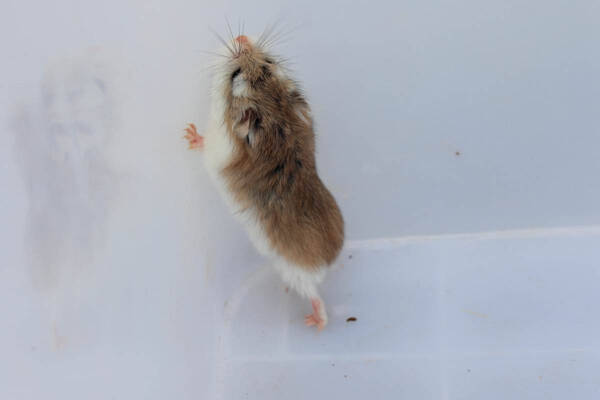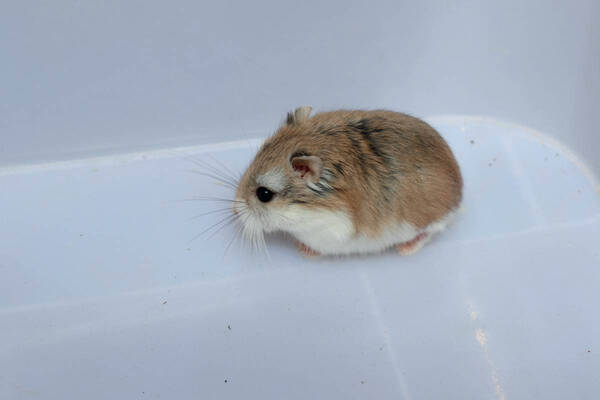Phodopus roborovskii
IUCN
LCBasic Information
Scientific classification
- name:Phodopus roborovskii
- Scientific Name:Phodopus roborovskii,Roborovsky hamster, desert hairy rat, bean rat, and mother-in-law rat
- Outline:Rodents
- Family:Rodentia Cricetidae Trichopoda
Vital signs
- length:65-100cm
- Weight:
- lifetime:
Feature
It is the smallest species in the hamster subfamily and has a characteristic short tail.
Distribution and Habitat
The distribution in China spans across northern China, including Xinjiang, Inner Mongolia, Ningxia, northern Gansu, northern Qinghai, Shanxi, northern Shaanxi, Henan, etc., and has recently been found in Tibet. Abroad, it is distributed in Mongolia, Russia and Kazakhstan.
The small hairy-footed mouse mainly inhabits sparsely vegetated dune areas in deserts, semi-deserts and dry steppes, or shrubs between dunes. It is also found in wastelands and farmlands.
Appearance
The body length is generally less than 90mm (average is about 72mm). The tail is very short, usually less than 14mm, not longer than the hind leg. The overall color is lighter, the back of the body is sandy brown, and the buttocks are lighter, yellow-brown. The ears are exposed outside the fur, with short sandy brown hair. There are usually white patches above the eyes and behind the ears. The abdomen is pure white, with a clear boundary between the dorsal and ventral fur. The front and rear feet are densely covered with pure white fur. The claws are white. The skull has a short snout. The skull is round. The molars are in two vertical rows. The auditory bulla is small. The incisor holes are short.
Details
Phodopus roborovskii is a species of the genus Phodopus in the subfamily Cricetinae. The origin of the species is Nanshan in Inner Mongolia, China. The species-level classification status is stable, with 3 synonyms, one of which (<P. r. przewalskii>) is sometimes listed as a species, and sometimes as a subspecies, which is somewhat controversial. It is a species of sandy land and grassland on the edge of the desert and is drought-resistant. It is a broad herbivore, preferring grass seeds, and also eating plant roots and buds.

The small hairy-footed mouse is gentle, responsive, and good at running. It is mostly active at night, and is most active at dusk and dawn. The range of activity is small, generally no more than 50m from the cave entrance. It often digs holes on the slopes of sand dunes. The hole entrance is small, about 4cm. There are usually 1-2 hole entrances. When mice live in it, they often block the hole entrance with fine sand, but the entrance is recessed to form a small pit, which is easy to identify. The cave structure is simple, generally without branches, and occasionally with 2 branches. The diameter of the tunnel is larger than the hole entrance. The hole is about 50-100cm deep, with a round and swollen nest chamber at the end. The nest is covered with dead leaves and other flocs. It does not eat much, but it will use its cheek pouches to steal and store any food it encounters back into the hole. It has a complex diet, mainly plant food, and also eats insects, especially beetles. Data from Inner Mongolia show that plant seeds account for 78.6%, and the rest are all branches and leaves. Sometimes the proportion of animal food and plant food is almost equal. It generally feeds on plant seeds, fruits, roots, stems, and leaves. It has the habit of storing food and stores it in warehouses. It does not hibernate and is more active in winter.

The small hairy-footed mouse breeds from March to September, and some can reach October. The gestation period is about 3 weeks, with 4-8 babies per litter, and the breeding peak is in May and June.
The species has a large population size and a wide distribution range. No population decline has been found, and there are no known major threats to the species. Because it eats sand-fixing plants, it causes certain harm to sand-fixing work, and the harm is more serious in some areas. Fleas occasionally parasitize on its body, but it is not obviously contagious to humans.
Listed in the 2016 "Red List of Endangered Species" of the World Conservation Union (IUCN) ver 3.1-Least Concern (LC).









